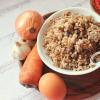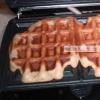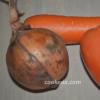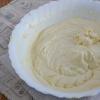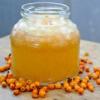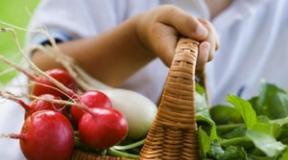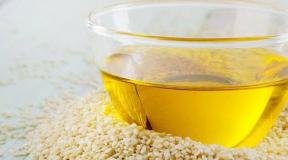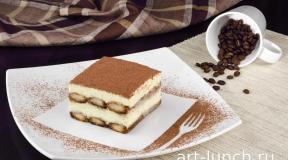Funeral kutia from rice with raisins, recipe. Kutya recipe for real kutya How to cook kutya
Every year on the eve of the New Year holidays and the Nativity of Christ, it is customary to serve a traditional Russian dish - kutya. But few people know about the history of this dish, its symbolism, and the differences in traditional cooking recipes for the three celebrations.
History of a traditional dish
The origin of the word “kutia” dates back to Ancient Greece, (Greek Kukkia) - literally translated as boiled grain. As in Greece, in Russia the dish was originally associated with traditional worship of the dead, and was served on the eve of all religious holidays.
Among the many names for this dish, the most common are: kolivo, sochivo and kanun. Kutya is always present on the table at Christmas, Epiphany and other Orthodox holidays.
The word "sochivo" literally translates as "food". And one of the most ancient names for kuti is “kolivo” (Greek kolibo), which means offering grain and fruit to the spirits of ancestors. Thus, Orthodox Christmas traditions originate from ancient pagan cults.
Is there a difference between Kutya and Sochiv
Sochivo is one of the many names for kutya. Among the cooking methods there are:
- sochivo - a thinner, watery porridge (from the words “juice” and “ooze”);
- Kolivo - dry and crumbly.
Many believe that there is no difference in recipes between kutya, koliv and sochivo - they are all one dish, but the name kolivo is more ancient, and sochivo is modern, and it comes from the name of Christmas Eve, Christmas Eve. But this is a wrong opinion, since the holy evening received its name from the juicy butter cakes - sochniki. Previously, slits were made in them for the eyes, and they used to tell fortunes - they “considered” a person’s fate through them.
Varieties of kutya
For each holiday there is a different way to prepare the eve. Depending on the ingredients used, there are 3 types of dishes.
Generous kutia for the New Year
She is being prepared for the New Year's table. Dairy products and butter are added to the dish, and various dried fruits and nuts are used. The original recipe for cooking kutia in pumpkin will be a discovery for every housewife.
Rich or lean kutia for Christmas
It is prepared on Christmas Eve - Christmas Eve, therefore it is often called sochivom, regardless of the recipe. This kutia is usually prepared from rice or millet. It is customary to bring the dish to godparents and older relatives living separately.
Hungry kutia for Epiphany
The porridge is prepared lean - from cereals and sweetener. But it is not prohibited to use nuts and fruits. Lenten bulgur colivo with honey is especially tasty.
The dish can be prepared from any cereal (rice, buckwheat, millet, bulgur, pearl barley) with the addition of poppy seeds and sweetener. The recipes use nut kernels, raisins and various dried fruits.
Symbolism of kutya and its ingredients
The main component of koliva is grain, which is a symbol of eternal life and rebirth. Belief in the immortality of the soul and its reincarnation is the main symbolism of the eve. Like seeds, falling into the ground and being reborn, the human spirit is reborn in a new body after burial.
Grain is able to “sleep” for a long time, preserving life within itself, and then reproduce it again with the arrival of spring. By eating kutya, a person symbolically becomes a part of the endless cycle of life.
Poppy seeds or nut kernels in kutya mean fertility. By adding these products, a person programs himself for wealth, generosity and prosperity for the whole family. That is why kolivo is often prepared at weddings and at the birth or christening of a child.
Honey in Sochiva symbolizes pleasure and sweet life, but not earthly, but eternal, which awaits a person in the kingdom of heaven. It is believed that the benefits of the afterlife are so great and beautiful that they exceed the wildest dreams and expectations.
Beliefs and fortune-telling at kutya
It has long been believed that the richer and more satisfying the juice, the more abundant the harvest and family wealth will be. Several ears of wheat were placed under a plate with koliv, which were then kept throughout the year as a talisman. Not only family members ate porridge; they also treated livestock and poultry. It was believed that in this way they would not get sick and would give good offspring.
Fortune telling for the harvest
Christmas fortune telling on Sochi is still popular today. The head of the family must take a spoonful of koliv and throw it up. How many grains of porridge stick to the ceiling, how many sheaves of grain are expected to be collected this year.
Fortune telling for the betrothed
A girl's fortune telling for her betrothed: an unmarried girl scooped up the first spoon of kutya, wrapped it in men's pants, and then hid it under the pillow. It was believed that on this night she should dream of her betrothed.
Secrets of preparing delicious kutia
Previously, kolivo was prepared mainly from whole grain wheat. To make the porridge tasty, you need to prepare its base correctly.
Kutya base
To do this, the grains should be lightly crushed in a mortar with the addition of a small volume of water, and the chaff should be removed. You can pre-soak the wheat for several hours, this will reduce the cooking time. The grains must be boiled until fully cooked and soft, then the juiciness will turn out excellent.
Most housewives prefer to use rice as a base. This cooking method is simpler and faster.
How to properly cook rice for kutya
- rinse the cereal well until the water becomes clear, without a powdery color;
- put 1 portion of rice in a pan and pour hot boiled water in a ratio of 1:1.5; put on the stove;
- Bring the porridge to a boil over high heat and cook for 3 minutes, stirring constantly;
- set the heat to medium and cook for another 6 minutes;
- at the end, reduce the heat to minimum, cook for another 3 minutes, do not forget to stir;
- then remove the pan from the heat, cover with a lid, and leave the porridge to brew for 15 minutes.
Rice prepared this way turns out very tender and crumbly. No spices are used during the cooking process, and the taste of the dish will depend on the dressing. Rice kutia with raisins, honey and almonds is the most popular and delicious recipe for making kutia for Christmas.
Coliva dressing
Liquid melted honey or sweet uzvar are most often used as a dressing. Kolivo can be flavored with milk or cream. Often butter or sunflower oil is added to porridge. You can also use diluted jam, jam or sugar syrup as a sweetener for the dish.
Other Ingredients
The third component of kutia is most often dried fruits, poppy seeds and nuts. You can use a variety of spices, frozen berries and fresh fruits. Before adding poppy seeds to the porridge, you must grind them well until smooth, or mince them several times. Raisins in kutia quickly swell and lose their taste, so it is recommended to add them before serving.
Bottom line
Kutia is not just a dish on the festive table, it is a combination of religious customs and traditions of the Russian people. Properly prepared kutia is a symbol of eternal life, wealth and prosperity. There are many Christmas fortune telling and superstitions associated with this dish. At the family table, the spirits of ancestors are revered with koliv, and they are charged with vital energy for the coming year.
Kutia with raisins is a Lenten porridge that is prepared for a funeral table or before Christmas.
Traditionally, it is made from wheat, but you can cook it from barley, oats, or even cook kutia from rice with raisins.
Funeral kutia with raisins is prepared for funeral dinners or certain days when people gather together to ask the Almighty to put the soul of the deceased to rest through joint prayers.
The grains of wheat symbolize Sunday.
To sprout, the grain must fall into the ground and rot. Honey and raisins are a symbol of the spiritual benefits of eternal life.
Kutya is the personification of our faith in the immortality of the soul.
Kutya with raisins is prepared not only on the eve, but also for the New Year and Epiphany.
Before Christmas they prepare Poor Kutya, that is, Lenten Kutya, since Lent is still in progress.
And already on New Year’s Day they cook Rich Kutya, to which you can add butter and cream.
Kutya with raisins - basic cooking principles
Kutia is boiled wheat grains or boiled rice, flavored with honey, nuts, raisins and poppy seeds. The main thing is that the grains of the cereal remain intact in the kutya.
Our ancestors prepared kutya only from wheat, now many cook this dish from pearl barley, barley or rice.
There is a belief that the richer the kutia for the New Year, the more generous and prosperous the whole year will be. In addition to honey and raisins, this kutya also contains nuts, cream, candied fruits, poppy seeds, marmalade and jam.
Kutia made from rice with raisins is very popular today, since the cereal is prepared faster, and the dish itself turns out more tender than kutia cooked from wheat.
Before preparing kutia, the cereal is washed several times. If you are cooking with wheat or oats, be sure to soak them for several hours so that the cereal cooks faster. Then it is boiled until tender.
Sugar or honey is diluted in water or uzvar is boiled from them and poured over boiled cereals. You can not dilute it with water and add it directly to the porridge. Then add dried fruits, nuts, poppy seeds and candied fruits and mix. Kutya from rice with raisins is cooked in the same way, only the rice does not require such a long soaking.
Kutya is placed in beautiful dishes and always decorated with nuts, candied fruits or dried fruits.
Recipe 1. Kutya with pearl barley raisins
Ingredients
a glass of pearl barley;
a third of a glass of honey;
30 g sugar;
a third of a glass of walnuts;
a third of a glass of raisins.
Cooking method
1. Boil water in a kettle. Wash the pearl barley well and pour boiling water over it. Leave for ten minutes. Then put the saucepan with the cereal on low heat and cook until soft.
2. Rinse the raisins and soak them in hot water for a quarter of an hour. Grind poppy seeds in a coffee grinder.
3. Transfer the finished pearl barley into a deep bowl. Add sugar and honey to hot porridge. Stir until they are completely dissolved.
4. Crush the nuts with a rolling pin. Add raisins to the sweet porridge, draining them of water and lightly squeezing them, poppy seeds and nuts. Mix again. You can decorate the top with slices of fresh apple.
Recipe 2. Rice kutia with raisins and dried apricots
Ingredients
rice - a glass;
salt - a pinch;
poppy seed - half a glass;
liquid honey – 80 ml;
raisins - half a glass;
dried apricots – 70 g;
walnuts - half a glass.
Cooking method
1. Rinse the rice grains several times until the water becomes clear. Place the washed rice in a cauldron and pour boiling water over it so that the water is two fingers above the level of the cereal. Add a pinch of salt. Close the cauldron with a lid and cook the rice over moderate heat for a quarter of an hour. The main thing is that the rice grains do not boil completely and do not turn into a sticky mass. The rice should be crumbly, but not soggy. After 15 minutes, turn off the heat and leave the cauldron with rice for another quarter of an hour.
2. Soak poppy seeds in boiling water. Drain the cooled water and grind the poppy seeds two or three times in a meat grinder.
3. Rinse raisins and dried apricots. Pour boiling water over dried fruits and soak for 20 minutes. As soon as they have steamed, drain the water and dry the dried apricots and raisins on a napkin. Cut the dried apricots into thin strips and leave the raisins whole. Break the nuts into several pieces.
4. Dilute honey in a small amount of drinking water and pour it into the rice. Then add nuts, poppy seeds, dried apricots and raisins. Mix well and transfer to deep bowls. Top with nuts and strips of dried apricots.
Recipe 3. Funeral kutia with raisins in a slow cooker
Ingredients
half a kilogram of wheat grains;
100 g walnuts;
half a kilogram of honey;
two liters of drinking water;
200 g raisins;
poppy – 100 g.
Cooking method
1. Sort and wash the wheat grains under running cold water. Place the washed grains in the multicooker container. Pour filtered water over the cereal. Turn on the “Cooking” mode and cook for half an hour. Then leave the wheat in the “Warming” mode for another hour. Transfer the cereal to a sieve and rinse again with cold boiled water.
2. Place poppy seeds and raisins into separate bowls. Pour boiling water over them and leave for an hour.
3. Place the wheat grains in a salad bowl. Top with chopped nuts and raisins. Mix poppy seeds with half a portion of honey and beat with a blender for two minutes. Add the honey-poppy mixture to the porridge.
4. Mix everything well, add the remaining honey and pour in warm water to get the consistency of thick sour cream. Top with nuts, poppy seeds and small candies.
Recipe 4. Rice kutia with raisins, nuts and dried fruits
Ingredients
long grain rice - a glass;
50 g granulated sugar;
50 g butter;
70 g liquid honey;
mixture of prunes, dried apricots and dried cherries – 100 g;
100 g of dried apples, pears and raisins;
100 g of poppy seeds and walnut kernels.
Cooking method
1. Cut apples, prunes, pears and dried apricots into small strips. Place the chopped dried fruits in a saucepan, add the cherries and pour two glasses of drinking water over everything. Place the saucepan on the fire, boil, and cook over low heat for ten minutes.
2. Pour the poppy seeds into a deep bowl and pour boiling water over it for forty minutes. Then drain the liquid and grind the poppy seeds in a blender until they turn white.
3. Rinse the rice under running cold water several times. Pour the rice into a dry frying pan, and stirring continuously, dry the cereal. Then add butter and continue to fry, gradually adding sugar, until the rice turns slightly golden.
4. Place the rice cereal into a saucepan, add raisins and pour pre-cooked uzvar with dried fruits over everything. From the moment it boils, cook the kutia for a quarter of an hour over low heat.
5. Dissolve honey in warm water and pour this mixture over kutia. Add broken nuts and poppy seeds. Gently stir the contents of the saucepan. Transfer to a beautiful bowl and serve the kutya when completely cooled.
Recipe 5. Funeral kutia with raisins and prunes
Ingredients
whole pearl barley – 200 g;
granulated sugar and honey;
poppy – 100 g;
30 ml vegetable oil;
peeled nuts and raisins – 50 g each;
prunes – 100 g.
Cooking method
1. Rinse the barley and soak in cold drinking water overnight. The next day, rinse the cereal. Transfer the pearl barley to a cauldron, add vegetable oil, pour in two glasses of filtered water and cook, periodically removing the foam. Add salt to the porridge, turn off the heat and cook for about an hour until the porridge becomes soft.
2. Rinse dried fruits and almonds. Place prunes and raisins in separate plates and pour boiling water over them. Leave to soak for an hour. Soak poppy seeds in boiling water. Soak the almonds for ten minutes, then remove the skin, place in a dry frying pan and dry.
3. Drain the water from the poppy seeds and crush the grains in a mortar. Drain the water from the dried fruits, place them on a napkin and dry. Then cut the dried fruits into small strips.
4. Place poppy seeds, almonds and dried fruits in pearl barley, add sugar and honey. Mix everything well and place in a heap on a dish. Decorate the kutia and serve it chilled.
Recipe 6. Christmas kutia with raisins
Ingredients
wheat - glass;
honey – 80 g;
drinking water - three glasses;
roasted walnuts – 100 g;
salt - a pinch;
100 g - raisins;
vegetable oil – 30 ml;
poppy seed – 125 g
dried fruits – 200 g;
drinking water - two glasses.
Cooking method
1. Sort and wash the wheat well. Soak the cereal for several hours. Place the wheat grains in a cauldron, fill them with water, salt and pour in vegetable oil. Cook the cereal for about two hours.
2. Soak poppy seeds in boiling water for an hour. Then place it on a sieve and wait until all the water has drained. Grind the poppy seeds in a blender until they turn white.
3. Pour boiling water over the raisins and soak for 20 minutes. Then drain the water and dry the raisins on a napkin.
4. Rinse the dried fruits, place them in a saucepan and fill with two glasses of drinking water. Place the saucepan over low heat. From the moment it boils, cook the uzvar for ten minutes. Then cool it until warm, drain all the liquid into a separate bowl and add honey and stir until it is completely dissolved. Do not throw away dried fruits!
5. Place the wheat grains in a bowl and cool. Add to them chopped and lightly fried nuts, grated poppy seeds and chopped dried fruits from uzvar. Pour honey uzvar into kutya and stir. Decorate the kutia with nuts and candied fruits.
Recipe 7. Rice kutia with raisins and nuts
Ingredients
300 g rice cereal;
100 g liquid honey;
250 g - almonds, walnuts and hazelnuts;
170 g each - raisins and poppy seeds.
Cooking method
1. Rinse the rice thoroughly under running water and boil according to the instructions on the package. At the same time, make sure that it does not turn into a sticky mass. The porridge should be crumbly.
2. Pour the nuts into a dry frying pan and lightly fry. Peel them and break them into several pieces.
3. Pour boiling water over poppy seeds and soak for half an hour. Then drain the water and pass the poppy seeds through a meat grinder twice or grind in a blender.
4. Soak the raisins in boiling water for half an hour. Then drain the water and dry the raisins on a napkin.
5. Combine hot rice porridge with nuts, raisins and poppy seeds. Dissolve honey in a partial glass of warm water and pour this mixture over the kutya. Stir, place in a deep plate, garnish with nuts and cool completely.
To prevent rice from turning into a sticky mass, prepare kutya from long-grain polished rice.
First pour a little less water into the rice than indicated in the recipe. While cooking, taste the rice; if the middle is damp, add a little more water.
To make raisins juicy and soft, be sure to soak them in boiling water.
For kutia, use only liquid honey. If your honey is candied, melt it in a water bath.
Traditionally, Christians prepare kutya for various occasions, but primarily it is still associated with the Christmas holidays. There is no single recipe for kutya. Mothers and grandmothers tell us how to prepare delicious kutya. In kutya, both wheat and barley or rice can be used. Traditionally, poppy seeds, nuts, raisins, honey, sugar, and jam are added. In general, preparing kutia is not so difficult. And for it to be really tasty, you need to know a few secrets.
1. Wheat for kutya is prepared as follows: first, the grain is pounded in a wooden mortar, adding a teaspoon of warm water so that the grain shell completely falls apart. The kernels are then separated from the chaff, sifted in the wind and washed. Or they buy wheat prepared for kutya in a supermarket or market.
Kutya is boiled in water with the addition of a small amount of salt (believe me, this significantly improves the taste). If there is a lot of liquid and mucus in the boiled kutia, you can put it on a sieve and rinse with cold water.
If in your home kutya is traditionally prepared not from wheat, but from rice or barley, then simply cook these cereals as usual, but do not add too much water - the porridge should come out crumbly.
2. Any honey is suitable for kutya - linden, flower, buckwheat - depending on your preferences. It is the taste of honey that sets the taste of kutya. However, it should be remembered that it can be diluted with water no more than 40 degrees, otherwise all the beneficial substances in it are destroyed. If honey is contraindicated for you or someone in your family due to allergies, replace it with sugar.
3. Before adding poppy seeds in the corner, it should be steamed with boiling water and simmered over low heat for 5-6 minutes. and leave covered until completely cool. Pass the cooled steamed poppy seeds through a meat grinder twice or grind well in a blender until white.
4. The raisins for kutya need to be sorted out, washed well and scalded with boiling water. You can pour the washed raisins with cold water for 20-30 minutes, drain the water, and put the raisins in the kutya.
5. It is better to chop the peeled nut kernels (for Ukrainian kutya the most traditional are walnuts, but possible options include almonds, cashews or hazelnuts) with a knife so that they do not turn into very fine “crumbs”.
Now let's move on to the recipes for Christmas kutia.
Wheat Kutya with honey (classic)
Ingredients: 1.5 cups of wheat, 200 g of honey.
Recipe. Pour clean wheat grains with cold water for 2-3 hours, cook until tender, strain the liquid. Dilute honey with warm water and pour it over cooked wheat.
Wheat kutia with jam
Ingredients: 400 g of wheat, 1 glass of berries or fruit jam.
Recipe. Sort the wheat, rinse and boil in salted water until tender, drain in a colander, cool and mix with berries or fruits. If the kutia is too thick, you can add a little warm water with sugar or honey.

Wheat Kutya with poppy seeds
Ingredients: 400 g wheat, 1 cup poppy seeds, 1/2 cup sugar or honey.
Recipe. Sort the wheat, rinse, add to boiling water, bring to a boil, place in a sieve, pour over cold water, put in a saucepan, add water, bring to a boil, close the lid tightly and put in the oven to simmer until soft. Wash the poppy seeds, pour over boiling water, pound in a mortar until white or grind in a blender, add sugar or honey, mix with cooled wheat.

Wheat Kutya with poppy seeds and nuts
Ingredients: 1 cup wheat, 100 g poppy seeds, 100 g peeled walnuts, 2-3 tbsp. spoons of honey, sugar to taste.
Recipe. Sort the wheat, rinse and boil in salted water until tender. Grind the poppy seeds until milk forms, add honey and mix well with the wheat. Lastly, add the chopped walnuts.

Wheat kutia with honey, raisins and nuts
Ingredients: 200 g wheat, 100 g raisins, 100 g honey, 50 g peeled walnuts.
Recipe. Sort the wheat, rinse and boil in salted water, place in a sieve, and rinse. Place in a bowl, pour over honey diluted with a small amount of water, mix with crushed walnuts and prepared raisins

Wheat kutia with raisins and dried apricots
Ingredients: 250 g of prepared wheat, 150 g of seedless raisins, 150 g of dried apricots, 100 g of honey.
Recipe. Boil the wheat grains until softened, but so that they remain intact. Rinse the raisins and dried apricots well, add cold boiled water and let them swell. Drain the water, place in a sieve, and chop the dried apricots. Combine everything, add honey and mix.

Rice kutia with almonds and raisins
Ingredients: 250 g rice, 100 g almonds, 100 g raisins, cinnamon and sugar to taste, powdered sugar.
Recipe. Sort the rice, rinse, add cold water, bring to a boil, drain in a colander and rinse with cold water. Then pour the rice again with plenty of cold water and cook until done. Drain the water and cool the rice. Grind almonds scalded with boiling water in a blender, add sugar, dilute with a small amount of water and mix with rice, then add raisins and cinnamon scalded with boiling water and mix again. Place in a large plate and sprinkle with powdered sugar.

Rice kutia with dried and candied fruits
Ingredients: 200 g rice, 200 g dried fruits, 200 g candied fruits, 100 g walnuts or other nuts, 1 glass of sugar.
Recipe. Boil the rice in a small amount of water, place in a sieve and pour over cold boiled water. Pour dried fruits with water, bring to a boil, mix with sugar, strain and mix with rice. Place in a deep bowl, add candied fruits, pour over the syrup in which the dried fruits were boiled.

Barley (pearl barley) kutia with raisins, honey and cinnamon
Ingredients: 1 cup pearl barley, 1 cup raisins, 1 teaspoon cinnamon, 100 g honey.
Recipe. Sort the pearl barley, rinse, cook in plenty of water until tender, place in a sieve and cool. Add honey (if thick, dilute with warm water), cinnamon, washed and scalded raisins and mix.

Many people love this dish for its sweet taste, some do not like it, and such people prefer to eat it out of necessity because of traditions. Perhaps it was simply prepared incorrectly. But you will certainly like our recipes.
What is kutya? This is a dish of Orthodox cuisine, which is a symbol of the faith of living people in the kingdom of heaven and in Traditionally, our grandmothers prepared this dish from cereals - wheat or rice, and also added honey, nuts or raisins to it. This is how we prepare it now.
Why do they prepare kutya for funerals? Each individual product taken from the recipe symbolizes something. For example, grain signifies resurrected life, honey has been considered a symbol of well-being, prosperity and wealth since ancient times, poppy symbolizes financial well-being and abundance.
What else you need to know about kutya
Before we learn how to cook kutia, let's figure out what this dish is. Usually, on the eve of the holidays, the owner of the home took a plate in which kutia was placed, walked exactly three times around the perimeter of his house and threw several spoons of the dish through the window or door. This symbolized a treat for the spirits. Then the family read various prayers and began to eat with this particular dish.

We prepare a dish according to ancient traditions from rice
How to cook kutya for Christmas? Now some continue to do it for this holiday, although more and more it has begun to be used only at funerals. Depending on how much liquid there is, you get either crumbly or semi-liquid kutia. Made from rice, it turns out tender, which is perfect for feeding small children.
Traditional option
What you need: steamed rice, two types of raisins - light and dark, poppy seeds, dried apricots, honey, nuts of any kind.

Preparation technology: wash the raisins and dried apricots under running water, pour boiling water over them to swell and leave to steep for half an hour. Pour the nuts into a hot frying pan and fry them, stirring, for 3 minutes. After the nuts have cooled, chop them finely with a knife. Pour a little water into the poppy seed and leave for half an hour. Remove dried apricots and raisins from the water, dry and cut into strips. There is no need to cut the raisins. Drain the liquid from the poppy seeds, now crush in a bowl or mortar until white juice comes out, and do not forget to add water. Cook the rice until cooked as directed in the package.
Now you need to combine everything together - rice, dried fruits, nuts, poppy seeds and honey. Christmas kutia is ready!
How to cook from wheat
You have already learned how to properly prepare kutia from rice. Let's try a wheat dish now.
You will need the following ingredients: a glass of wheat cereal, 100 grams of poppy seeds, 100 grams of walnuts, the same amount of raisins, 2 tablespoons of honey (less can be used so that the kutia is not too sweet).
Cook the wheat porridge until ready (take 2 cups of water per glass of wheat groats). The poppy seeds should be boiled for about 10 minutes, strained and crushed in a mortar. Fry the nuts in a hot frying pan and crush. Pour boiling water over the raisins and sort thoroughly. Mix all the ingredients with honey, arrange in beautiful vases and place in the very center of the table.
Recipe for rice with poppy seeds. Method two
How to cook kutya from rice with poppy seeds? You need to take 1 glass of rice, 100 grams of poppy seeds, 100 grams of various nuts, 3 tablespoons of honey, a little sugar.

Now we prepare the dish itself: pour 1.5 cups of rice. boiling water Then cover it with a lid rather tightly and cook over high heat. Just three minutes is enough. If you are afraid that it will burn, cook for 6 minutes over medium heat. Turn off the heat and let your rice cook in the pan, tightly covered, for 12 minutes. Add remaining ingredients.
Preparing the broth
You learned how to cook kutya from rice with poppy seeds. Well, what would a festive table be without a brew?
You will need 100 g of dried fruits and berries, 100 g of pears, 100 g of apples, 100 g of cherries, 50 g of plums, raisins - 2/3 cup, 1 kilogram of sugar or honey.

Now let's prepare: sort out the dried fruits, rinse them thoroughly, put them in a saucepan and fill them with water. You should cook and at the same time take into account the time during which this or that ingredient will be cooked. To do this, first put pears and apples in the pan, then add plums, cherries, and finally raisins. Everything is brought to a boil. Drain the broth and strain it from the pulp. Now you need to dissolve sugar and honey in it, pour it over the fruit, and then bring everything together to a boil. Place the broth in a cold place and let it steep for six hours.
Explosion to Kutya. Second recipe
After you have learned how to cook kutia and prepared it, make the broth. Here's the second recipe:
You will need rice (1/3 cup), 5 pieces of dried apples and pears, a glass of sugar, a glass of prunes and the same amount of red wine.

The technology needs to be boiled in a large amount of water, after which it is placed on a sieve and washed with cold and boiled water. Now pour the washed dried fruits with water, add 1/2 cup of sugar and cook until done. The broth is drained, sugar is added, and a syrup of thick consistency is boiled. We pour this syrup over the rice, add half of the wine taken, and mix. The mold now needs to be moistened with water, sprinkled with sugar and layered with fruit, then rice and fruit again. When serving, turn the pan over, place the broth on the dish, and pour over the remaining wine.
Preparing a dish for a funeral
Let's now find out how to prepare kutya for a funeral. Necessary ingredients: enough for two glasses of water, about a glass of rice, some raisins (any amount to taste), sugar (can be replaced with honey), salt and marmalade candies to taste.
Preparing funeral kutia is quite easy if you know how to cook rice. It needs to be washed in cold water, add sugar, salt and honey. Next, rinse the raisins thoroughly. Pour boiling water over it and leave it like that for 10 minutes. After the raisins have steeped, dry them or pat them dry with a towel, and add to the rice. This kutia is laid out on a plate in the form of a slide and decorated with marmalade sweets on top.
Preparing kutia for a funeral
Now let's learn about how to prepare kutya for a funeral. The dish is designed for two people, but you can cook more by simply increasing the proportions. You will need (two glasses are enough), 2 times less poppy seeds, 100 grams of honey or sugar, salt to taste.
Carefully sort through the wheat grains and remove any debris. After this, it is washed in several waters until transparent. Bring the liquid to a boil, and then add wheat grits. Next, place the finished porridge on a strainer to drain excess liquid, and pour cold water over it again. Now put the finished cereal in a saucepan, but it is better, of course, to take a traditional clay pot. Fill with water, let it boil, close the lid tightly. After this, place it in the oven and wait until the porridge is ready.
Next, you need to rinse the glass of poppy seed with cold water, pour boiling water over it, then cold water. Place in a mortar and pound until white until it separates. Now you can add sugar or honey as a substitute, as well as a little salt. This resulting mass must be mixed with wheat porridge. Didn't you like that the kutia was thick? No problem! Pour in the cooled broth after cooking the wheat, and the porridge will become semi-liquid again.
In the Orthodox faith, kutia, or kolivo, symbolizes eternal life and resurrection. Therefore, it is customary to prepare sweet rice porridge for funerals. It is placed in a common deep plate and placed in the middle of the table. Each guest scoops up one spoonful of kutya from the plate and puts it straight into his mouth, commemorating the deceased.
Traditions of cooking kutia
There is no single traditional recipe for kutya. In families, the recipe for this dish is passed down from generation to generation, and everyone considers their version to be the most correct. Despite this, all recipes use similar principles and similar ingredients.
The taste of kutya varies depending on the additives and dressings of the funeral porridge. It can be prepared using pearl barley, millet and rice, and flavored with sugar, honey or sweet syrup. A pleasant combination of neutral grains and sweet dressing gives the funeral dish a specific taste and unique aroma.
Kutya recipe for a funeral
Kutya is supposed to be served at funerals on the 9th, 40th day, for six months and for a year. It is also used to open a memorial meal on special dates.
Ingredients:
- 0.5 cups long grain rice
- 2 glasses of water
- 100 g white raisins
- 50 g candied fruits
- 1 tbsp. honey
Place the raisins on a plate and remove the stems. Rinse and leave in water for 20-30 minutes. Then rinse and dry again. To ensure that the honey is well absorbed into the rice and gives the desired sweetness to the kutia, melt it in a water bath. Grind the candied fruits. Since the fruits added to kutya symbolize the fruits of heaven given to humanity by the Almighty, you can put not only raisins, but also dried apricots, prunes, cut into pieces, and poppy seeds into kutya.
Before cooking rice, soak it in water for at least 2 hours to remove excess starch and gluten. Drain the water. Immerse the rice in fresh cold water and bring to the boil. Bring to a boil and after 2 minutes reduce heat to low. Do not stir rice with a spoon. Over low heat, the porridge will not burn, but will slowly gurgle, absorbing water. When the rice is completely boiled and there is no water left in the pan, pour honey into it and add raisins with dried fruits and other ingredients as desired. Stir and let stand for another 2 minutes.
Place the hot kutya into a deep bowl, smooth the surface and garnish with raisins. Cover with a saucer and leave to cool slowly. Kutya should be blessed before serving at the funeral table; it is better to do this in advance by visiting the church during the morning service.
Read also...
- Step-by-step recipe for tenderness cake with photos
- Frozen sea buckthorn compote Is sea buckthorn compote healthy?
- Recipe for stuffed squid with mushrooms and cheese Squid stuffed with mushrooms and cheese
- Lavash in the oven with filling: recipes for delicious and savory snacks Lavash roll with filling, baked recipes



